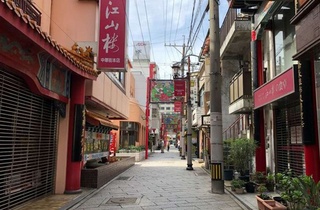“Serious cases remain high and are still overwhelming many hospitals. People should continue to work remotely and other social distancing measures so that we can return to safe and prosperous daily lives,” Prime Minister Yoshihide Suga said at a meeting of a government task force on the coronavirus response.
The state of emergency in 21 prefectures was to end on Sunday but will remain in place through Sept. 30 in 19 prefectures, including Tokyo, the nation’s capital.
On January 7, Suga declared a state of emergency for Tokyo and the prefectures of Chiba, Saitama, and Kanagawa effective from 8 January until 7 February.
Japan's death rate per capita from coronavirus is one of the lowest in the developed world, despite its aging population.
Factors speculated to explain this include the government response, a milder strain of the virus, cultural habits such as bowing etiquette and wearing face masks, hand washing with sanitizing equipment, a protective genetic trait, and a relative immunity conferred by the mandatory BCG tuberculosis vaccine.
A University of Washington excess fatality analysis published in May 2021 noted that the official figures could possibly only reflect 10 percent of the actual number of deaths.
The pandemic continued to be a concern for the 2020 Summer Olympics. Although the Japanese government and the International Olympic Committee negotiated its postponement until 2021.
In the end, the Olympics went ahead, with sports events running between July 23 and August 8 and multiple restrictions in place to avoid the breakouts of the virus.
Japan suffered a massive surge in new cases due to the Tokyo Olympics. There were nearly 860,000 cases in the country at the beginning of the Tokyo Olympics. (ILKHA)



 Dünya
Dünya
 Güncel
Güncel
 Güncel
Güncel
 Güncel
Güncel
 Güncel
Güncel
 Dünya
Dünya
 Güncel
Güncel
 Güncel
Güncel
 Sağlık
Sağlık
 Güncel
Güncel





